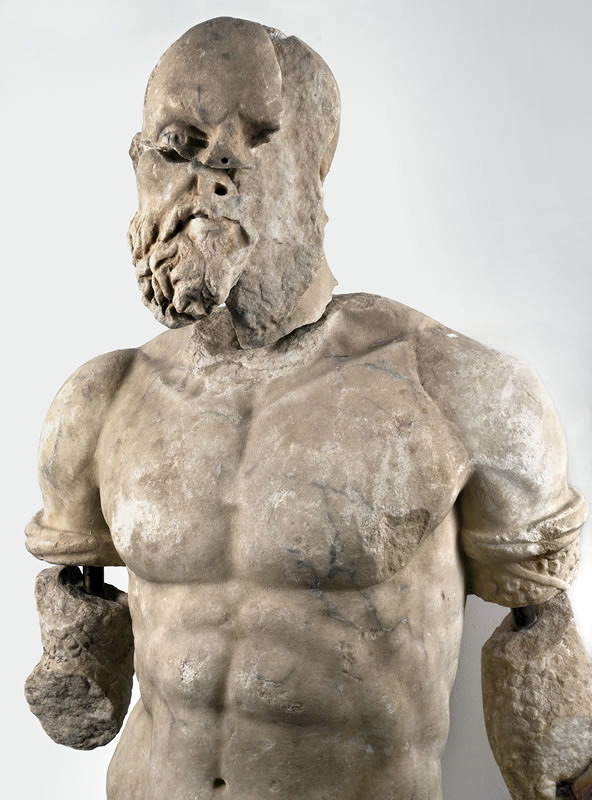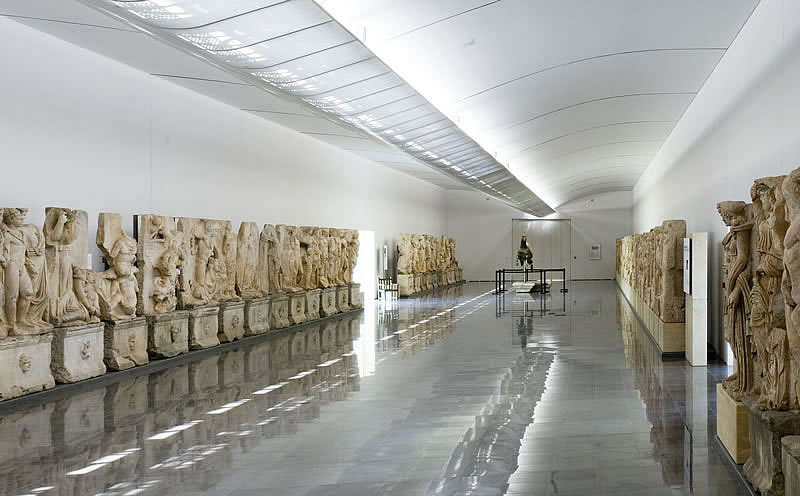Boxers
Boxer Kandidianos
The boxer is identified by the inscribed base as the champion Kandidianos, a victor on the international festival circuit. Like the second boxer (Piseas), he is naked apart from his long boxing gloves and wears the characteristic hairstyle of the professional athlete – that is, shaved but with a single lock of hair remaining on the crown of the head.
The statue was set up on the north side of the theatre stage, on the opposite side from that of Piseas. Kandidianos, however, stands in a different, more relaxed posture, with his gloved hands held lower, closer to his sides. The two statues also show considerable differences in workmanship and have different kinds of inscribed bases: they were not manufactured as a pair (Kandidianos’ statue re-uses an old base for a bronze statue).
Their similar inscriptions, identical scale, and close general appearance of the two figures, however, as well as their similar extensive ancient repairs, make it certain that they were set up as pendants to one another, in the third or fourth century AD.
Boxer Piseas
The statue is identified as Piseas, son of Piseas, by its inscribed base. Except for the arm-length boxing gloves, he is fully naked, the standard costume for Greek athletes in art and life. His head is partly shaved with a long lock of hair left on top (cirrus in vertice), a distinctive hairstyle of the professional athlete in the Roman period.
The statue is one of a pair of boxers that were set up, one on each side of the stage of the Theatre, probably on the ends of the retaining walls of the auditorium (analemma walls). Piseas’ statue was on the south side. The statue-maker, Polyneikes, placed his signature on the front face of the statue’s plinth.
The two boxer statues, placed in such prominent positions in the Theatre, are testimony to the intense prestige enjoyed by champion athletes in their hometowns.






